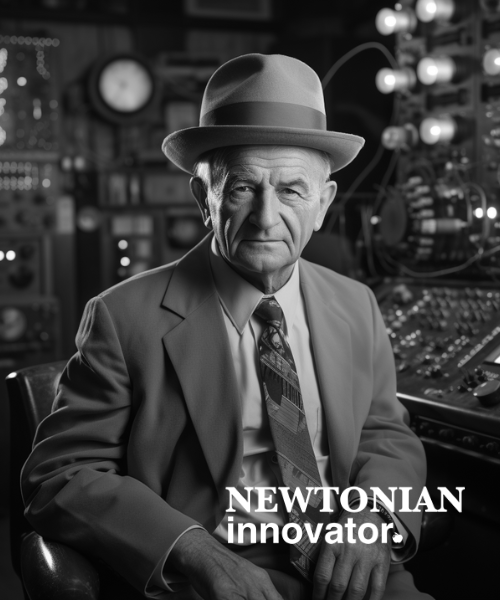Linus Pauling was one of the most influential chemists of the 20th century. In the early 1950s, he became interested in determining the molecular structures of proteins. At the time, the structures of proteins were not well understood. Pauling hypothesized that protein molecules formed structures called alpha helices. To test this idea, Pauling relied on thought experiments and physical models rather than direct experimentation.
Linus Pauling was born in 1901 in Portland, Oregon and earned a PhD in chemical engineering from Caltech. He spent most of his career at Caltech, where he conducted groundbreaking research on the nature of the chemical bond. Pauling was intensely curious and had wide-ranging interests in areas like quantum mechanics, molecular biology, and medicine. Outside of science, Pauling was a peace activist who advocated against nuclear weapons testing in the 1950s. He faced criticism for his political views and was even denied a passport by the U.S. government for a time. Pauling’s personal life was marked by tragedy – three of his four children died from illnesses at young ages. Despite these challenges, Pauling maintained an optimistic view of science as a force for improving the human condition. He continued his research and peace activism into old age, publishing his last paper at age 93.
Linus Pauling’s use of thought experiments and physical models to explain the alpha helix protein structure proved to be a major benefit to his scientific career. At the time Pauling proposed an alpha helix structure in 1951, the structures of proteins were not well characterized experimentally. Pauling became intensely interested in understanding the molecular structures of proteins. At the time, scientists knew proteins were long chains composed of different amino acids. However, the three-dimensional structure of these molecules was a mystery.

Pauling realized that amino acids contained chemical groups in their side chains that could form hydrogen bonds with each other. These bonds had the potential to stabilize the overall protein structure. Pauling decided to theoretically model different ways the amino acid chain could fold in space to allow hydrogen bonding.
After much analysis, Pauling proposed that the amino acid chain could coil into a unique spiral shape that he called the alpha helix. This shape would allow the chemical groups projecting from the amino acids to hydrogen bond with each other. The bonds would arise between groups spaced three to four amino acids apart in the chain.
To physically model his idea, Pauling used paper clips joined together by threads. Each paper clip represented an amino acid. By twisting the paper clips into a spiral formation, Pauling found he could form structures that mimicked his imagined alpha helix.
Pauling analyzed the geometry of the alpha helix model further. He calculated that there would be 3.6 amino acids per turn of the helix. He also determined the helix would have a pitch of 5.4 angstroms (the rise per turn along the helical axis). These physical measurements supported the plausibility of the alpha helix structure.
The thought process Pauling used was deeply creative and imaginative. Relying on his chemical intuition, Pauling conceived of a folded protein conformation purely from theoretical first principles.
Pauling published his seminal paper proposing the alpha helix structure in 1951. At first, there was skepticism about such an orderly structure arising from a chain of diverse amino acids. However, in the early 1950s, X-ray diffraction data provided experimental confirmation of Pauling’s proposed alpha helices in certain proteins. His conceptual model filled an important void in understanding how amino acids with different properties could interact to form stable protein structures. This gave credibility to Pauling’s approach of using thoughtful analysis coupled with physical modeling to determine molecular structures.
Pauling went on to deploy similar methods to great success in determining the structure of DNA and the theory of sickle cell anemia. The alpha helix work cemented Pauling’s reputation as one of the preeminent chemists and molecular biologists of the 20th century. When Pauling was awarded the 1954 Nobel Prize in Chemistry, the Nobel committee specifically cited his work on molecular structures, including the alpha helix.
Linus Pauling stands out as a beacon of innovation, resilience, and unwavering curiosity that has enabled him to make his mark in scientific history. His journey, marked by both triumphs and tribulations, offers a blueprint for modern researchers navigating the intricate pathways to discovery. As we reflect on Pauling’s legacy, it becomes evident that his success was not just a product of his profound knowledge, but also his unique approach to problem-solving and his determined spirit.

Today’s scientific landscape still holds mysteries as profound and challenging as those of Pauling’s era. The questions have evolved, but the essence of scientific inquiry remains the same. How can we understand the unknown? How can we visualize what’s yet to be seen? In this context, Pauling’s methodology becomes particularly relevant. He didn’t just rely on the tools and data available to him, he ventured beyond by using his imagination as a compass and his intuition as a guide.
For contemporary researchers, emulating Pauling’s mindset means adopting a holistic approach to problem-solving. While state-of-the-art equipment and vast datasets are invaluable, they are just part of the equation. True breakthroughs often come from the ability to think laterally, to connect seemingly unconnected dots, and to have the courage to challenge established norms. Pauling’s use of paper clips to model the alpha helix is a testament to the power of simplicity and the importance of tangible representation, even in an age dominated by digital simulations.
Pauling’s journey highlights the importance of perseverance. In the face of skepticism and adversity, both in his professional and personal life, he remained steadfast in his convictions. Today’s researchers will inevitably face challenges, be it in the form of funding constraints, academic pressures, or the daunting nature of unsolved problems. However, taking a page out of Pauling’s book, you can find the strength to persevere, driven by the awareness that every setback could be a stepping stone to a potential breakthrough.
Furthermore, Pauling’s interdisciplinary interests, spanning from quantum mechanics to molecular biology, highlights the importance of breaking down silos in modern research. In an era where the lines between biology, physics, computer science, and even social sciences are blurring, there’s an immense opportunity for cross-pollination of ideas. Through collaboration and embracing diverse perspectives, today’s researchers can piece together innovations that might remain elusive within the confines of a single discipline.
In conclusion, Linus Pauling’s legacy is not just about the discoveries he made, but the way he made them. It is an inspiration for today’s researchers to embrace both the art and science of discovery. To look beyond the obvious, to trust in their intuition, and to have the courage to venture into the undiscovered regions of science. As we stand on the edge of new frontiers in science and technology, let us remember that at the heart of every great discovery lies the spirit of inquiry, the passion for understanding, and the audacity to dream. In the words of Pauling himself, “The best way to have a good idea is to have lots of ideas.” Let that be the mantra for every innovator as they chart their own path leading to the halls of scientific discovery.






